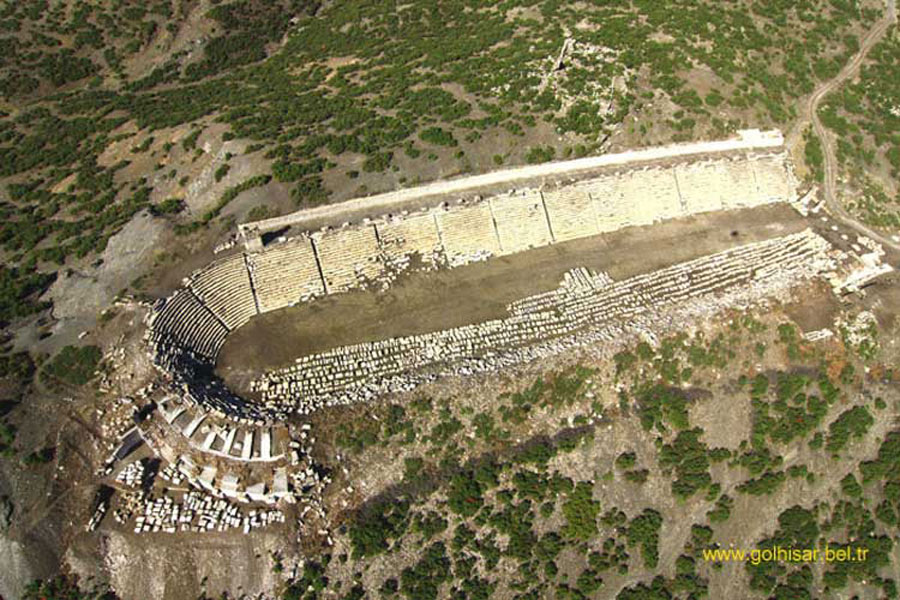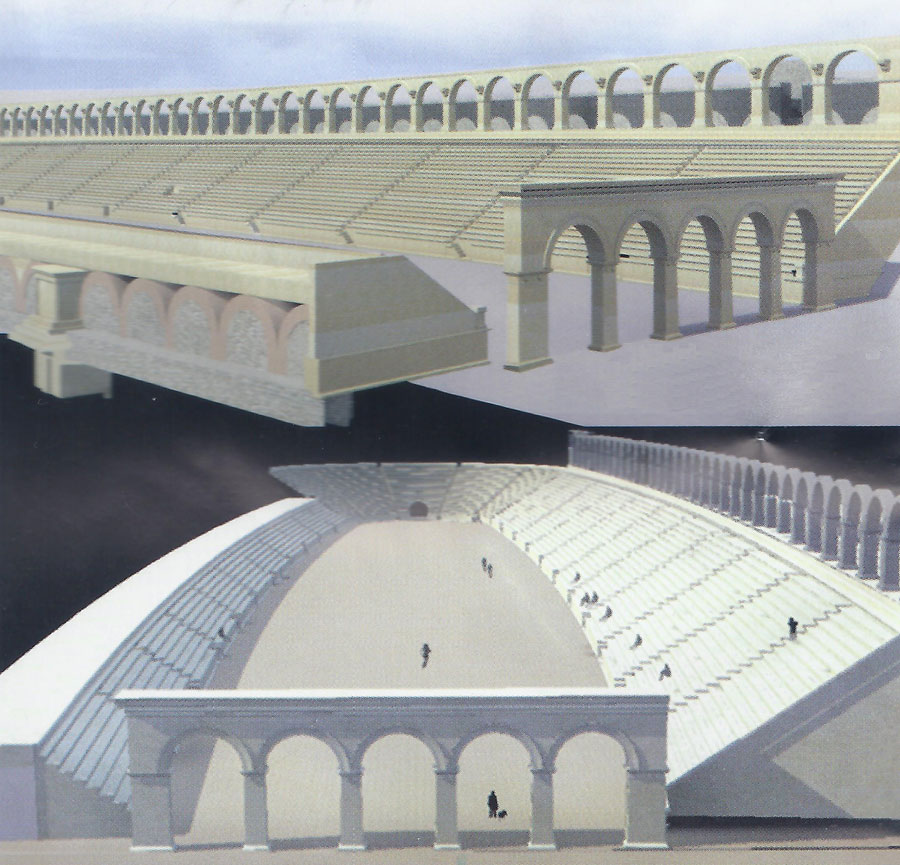 |
|
Ancient stadiums in Turkey Kibyra |
||||||||||||
|
|
|
|||||||||||
|
||||||||||||
|
The stadium was built on a relatively narrow slope of the mountain slope. In Hellenistic times, sports such as wrestling, boxing, discus and javelin throwing as well as running competitions found a wide audience. In Roman times, bloody animal hatreds and gladiator fights were added. |
||||||||||||
| The history of Kibyra: | ||||||||||||
|
Kibyra was an ancient city in the south of Phrygia, on the border with Lycia. In contrast to the "small" Kibyra in Pamphylia, the city was also called "the big Kibyra". The foundation by Sparta is legendary. In late Hellenistic times Kibyra led a four-city alliance (Tetrapolis) to which Balboura, Bubon and Oinoanda belonged. This was dissolved about 84-82 BC by the Romans under Lucius Licinius Murena. Kibyra belonged afterwards to the Roman province Asia, briefly between 56 and 49 B.C. to the province Cilicia, since Diocletian to the province Caria. |
||||||||||||
 |
||||||||||||
 |
||||||||||||
| Picture from the official flyer | ||||||||||||
|
|
||||||||||||
|
|
||||||||||||
|
|
||||||||||||
|
|
||||||||||||
|
|
||||||||||||
|
|
||||||||||||
|
|
||||||||||||
|
|
||||||||||||
|
|
||||||||||||
|
|
||||||||||||
|
|
||||||||||||
| Photos: @chim | ||||||||||||
| Translation aid: www.DeepL.com/Translator | ||||||||||||
| Source: Wikipedia and others | ||||||||||||
|
|
||||||||||||

